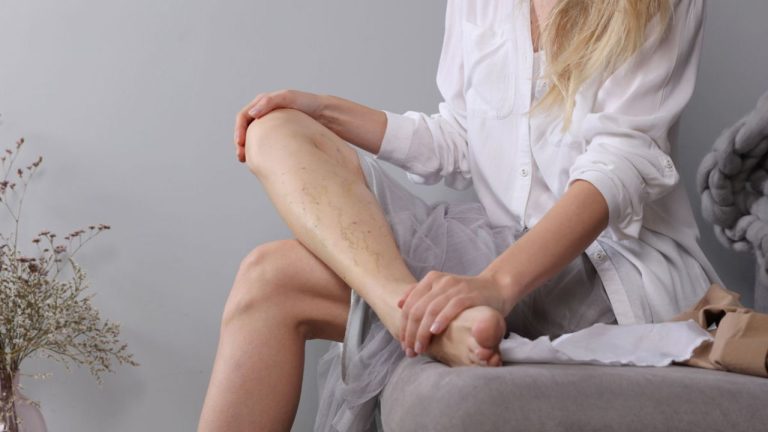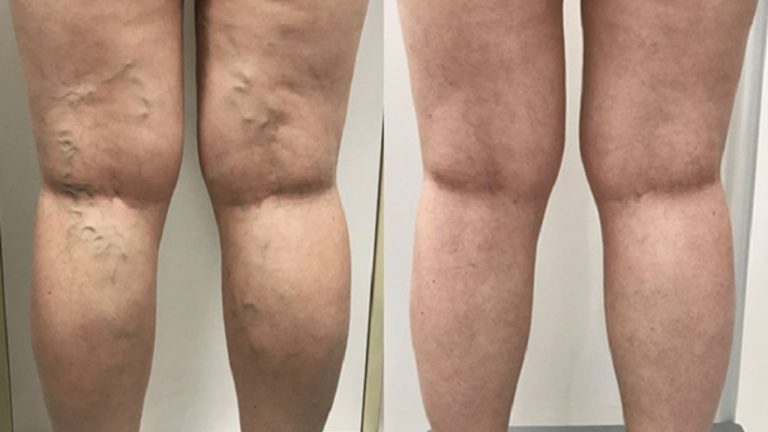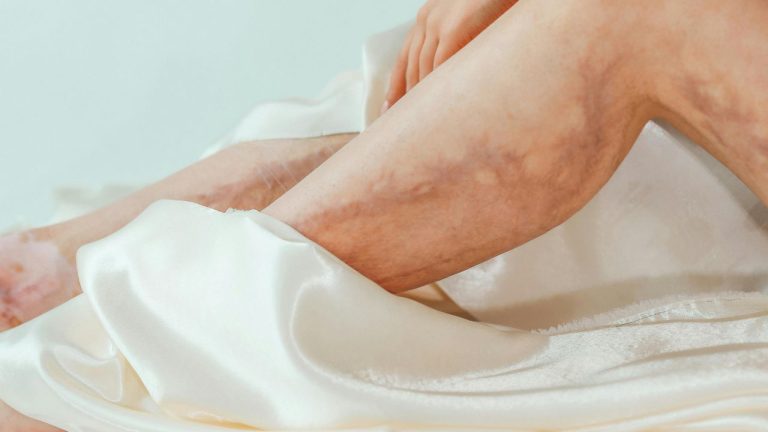After varicose vein surgery, rest becomes just as important as medication and follow-up care. The way you sleep can directly affect your healing, swelling, and overall comfort. Sleeping incorrectly may put unnecessary pressure on your veins, while the right posture can improve circulation and speed up recovery.
This guide explains the safest sleeping positions, practical tips, and answers common questions about resting after vein surgery. Let’s go with the details process-
Why Sleeping Position Matters?
After varicose vein surgery-whether it’s vein stripping, laser ablation, or radiofrequency treatment-your body undergoes a critical healing process. The treated veins are closed or removed so that blood can reroute through healthier veins. During this period, swelling, bruising, and mild pain are common as tissues adjust to the new circulation pathways. How you sleep plays a surprisingly important role in this recovery.
- Promotes Healthy Blood Flow
- Reduces Swelling and Inflammation
- Protects Healing Veins and Tissues
- Supports Pain Management
- Prevents Secondary Complications
How to Sleep After Varicose Vein Surgery [3 step]
Sleeping correctly after varicose vein surgery is essential to reduce swelling, improve circulation, protect healing veins, and minimize discomfort. Below are the detailed techniques, processes, and positions recommended by vascular specialists.

1. Supine Position (On Your Back) with Leg Elevation
Description:
Sleeping on your back with proper leg elevation is the most recommended position after varicose vein surgery. It promotes blood flow back to the heart, reduces swelling, and places minimal strain on your surgical sites, supporting faster healing.
Technique & Process:
- Lie flat on your back on a firm mattress.
- Place a wedge pillow or 2-3 regular pillows under your calves and feet so your legs are elevated above heart level if possible.
- Keep knees slightly bent for comfort; avoid sharp bends.
- Maintain a straight body posture with no twisting of torso or legs.
Benefits:
- Maximizes venous return and blood flow toward the heart.
- Reduces swelling and fluid buildup in the lower legs and ankles.
- Puts minimal strain on incision sites.
- Considered the safest and most effective post-operative sleep position.
2. Side Sleeping (Usually Left Side)
Description:
If sleeping on your back is uncomfortable, lying on your side—preferably the left—can still maintain circulation while reducing strain on your veins. Side sleeping is a safe alternative that helps alleviate discomfort from swelling.
Technique & Process:
- Lie on your left side with a firm pillow or wedge under your legs to maintain elevation.
- Optionally, place a small pillow between your knees for alignment and comfort.
- Keep your torso straight and avoid twisting your hips or shoulders.
Benefits:
- Reduces pressure on large veins compared to right-side or stomach sleeping.
- Maintains circulation while providing comfort.
- Helps decrease discomfort if swelling is significant.
3. Additional Sleep Support Techniques
Description:
Beyond positioning, supportive tools and small adjustments can make a significant difference in sleep comfort and recovery. These techniques help maintain proper leg elevation and vein support throughout the night.
Tips & Tools:
- Leg Wedge Pillow: Specially designed to maintain proper elevation comfortably.
- Adjustable Bed or Incline: Slightly raising the head of the bed can help if legs don’t naturally reach heart level.
- Compression Stockings: Use only as instructed by your surgeon to support veins and reduce swelling.
- Frequent Position Checks: If you wake in an awkward posture, gently reposition to the back or side with proper elevation.
Read Also: How to Relieve Varicose Vein Pain?
Positions to Avoid After Varicose Vein Surgery
After varicose vein surgery, certain sleeping positions can put unnecessary pressure on your legs, reduce circulation, and slow healing. It’s important to recognize which positions to avoid and follow simple tips to protect your veins.
Positions to Avoid
- Prone (on your stomach): Compresses the legs and treated veins, restricting blood flow.
- Tight fetal position: Curling the legs and body can put stress on incisions, impede circulation, and slow healing.
Tips to Avoid Issues
- Do not cross your legs while sleeping.
- Avoid dangling feet off the bed, as it reduces circulation.
- Adjust pillows and wedges as needed to maintain proper leg elevation throughout the night.
Step-by-step Sleep Routine Post-surgery
Following a structured sleep routine after varicose vein surgery can help reduce swelling, protect healing veins, and improve comfort. Here’s a recommended step-by-step approach:
- Wear Compression Garments: Put on any prescribed compression stockings or bandages as instructed by your doctor.
- Prepare Pillows or Wedge: Arrange pillows or a wedge under your calves and feet to elevate your legs above heart level.
- Choose Your Sleep Position: Lie on your back (preferred) or on your left side, ensuring your legs remain elevated.
- Adjust Knees if Needed: Keep knees slightly bent for added comfort, especially during the first few nights.
- Avoid Twisting: Ensure your torso and legs are aligned; avoid twisting your hips or shoulders.
- Maintain Position: Try to stay in this supported position consistently for the first 3–5 nights.
- Gradual Adjustment: After 1–2 weeks, you may slowly adjust to more natural or comfortable positions while keeping legs supported as needed.
Recovery Timeline
Proper sleep positioning evolves as your body heals after varicose vein surgery. Following a timeline helps manage swelling, reduce discomfort, and protect healing veins.
- First Few Nights: Stick to sleeping on your back with legs elevated above heart level using pillows or a wedge. This position maximizes circulation, reduces swelling, and minimizes strain on incision sites.
- First Week: Continue elevating your legs, but you can slowly begin to try supported side sleeping if more comfortable. Ensure pillows keep your legs elevated and avoid twisting your hips or knees.
- Weeks 2-4: As swelling and discomfort decrease, most patients can gradually return to more natural sleeping positions. Continue using pillows or wedges as needed for comfort and to maintain gentle support for the legs.
Following this gradual timeline ensures safe, comfortable sleep while supporting optimal recovery.
Practical Tips & Best Practices
- Use a Leg Elevation Pillow or Wedge: Choose a pillow or wedge designed for post-surgical recovery to maintain the legs at an optimal incline, supporting both calves and feet.
- Angle of Elevation: Aim to keep legs above heart level, or at least well supported, so blood flows “downhill” toward the heart.
- Avoid Overly Steep Angles: Support should be gentle and continuous; avoid sharp bends at the knees.
- Maintain Elevation for Intervals: You don’t need to keep legs elevated all night; alternate with breaks or adjust pillows. Many protocols suggest elevating for 15-20 minutes at a time, several times per day.
- Compression Stockings or Bandages: Continue wearing prescribed compression garments unless your doctor advises otherwise. Sometimes they may be removed during sleep for comfort.
- Avoid Crossing Legs or Dangling Feet: Keep legs aligned and avoid sharp bends while sleeping or reclining.
- Light Movement Before Bed: Gentle stretching or walking promotes circulation and reduces stiffness; avoid long periods of immobility.
- Hydration & Diet: Stay well hydrated and avoid heavy meals or stimulants near bedtime to support circulation and sleep.
- Pain Control: Use prescribed pain medication or approved over-the-counter options to ensure discomfort doesn’t disturb sleep.
- Adjust Gradually: In the early post-operative period, you may only be comfortable for short intervals. Gradually move toward natural sleep positions as healing progresses and as advised by your surgeon.
Have a Look: How Long Off Work After Varicose Vein Surgery
FAQs
Can I sleep on my side after varicose vein surgery?
Yes, side sleeping is safe if you keep your legs elevated with pillows. Left-side sleeping is usually preferred for better circulation.
How high should I elevate my legs while sleeping?
Ideally, your feet should be raised above heart level. A wedge pillow or multiple firm pillows can help achieve this without straining your knees.
Should I wear compression stockings at night?
Follow your doctor’s advice. Some surgeons recommend removing them during sleep for comfort, while others suggest wearing them around the clock in the first few days.
When can I go back to my normal sleeping positions?
Most patients gradually return to their usual positions within two to four weeks, depending on healing progress and medical guidance.
What if I wake up in the wrong position?
Don’t worry-it happens. Gently readjust back to a recommended position when you notice. Consistency is more important than perfection.
Conclusion
Good sleep is essential for a smooth recovery after varicose vein surgery. The best position is lying on your back with your legs elevated, while side sleeping with proper support is a safe alternative. Avoid positions that restrict circulation, and follow your doctor’s instructions about compression stockings and movement. By combining correct posture with healthy habits, you can reduce swelling, ease discomfort, and promote faster healing.



